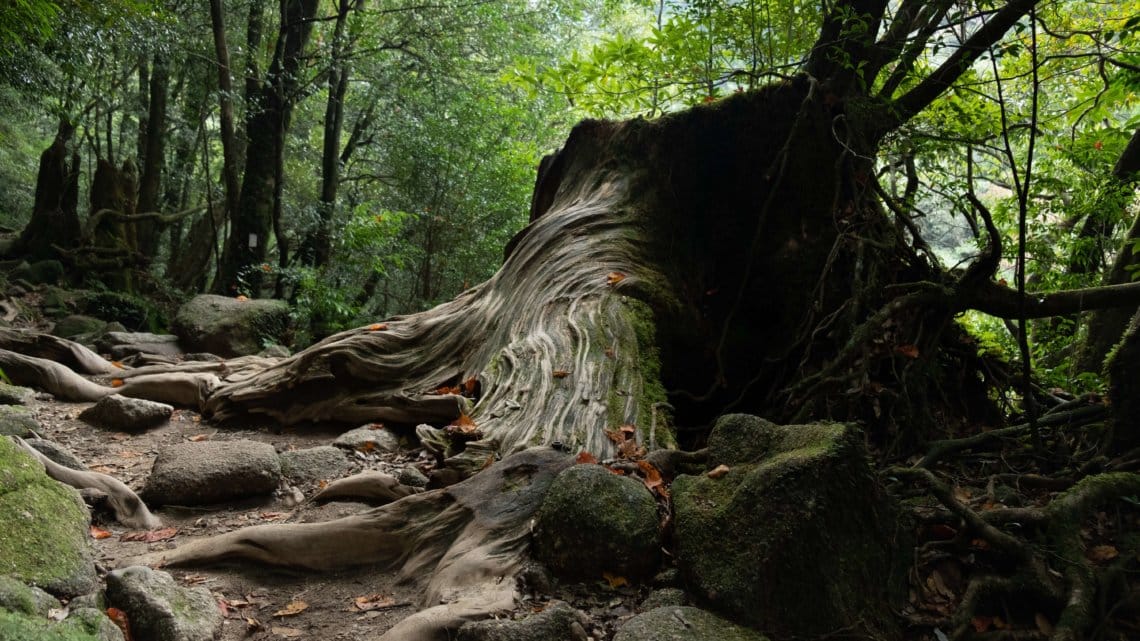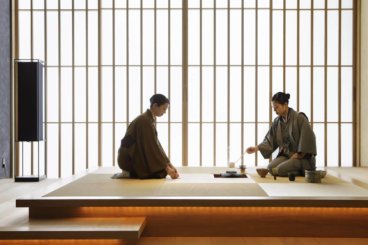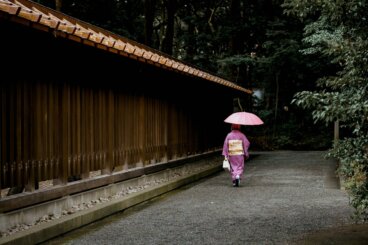If you’re the type of traveler who seeks out unique, non-touristy places, this short list of our favorite off-the-beaten-path Japan destinations is for you.
Most people who visit Japan focus on more well-known places, like Tokyo and Kyoto — and with good reason. You’ll find the modern and ancient capitals in our sample trips, along with other renowned destinations, because they’re truly worthwhile.
But to complement your travels to what might be considered “essential” destinations, it’s also worth getting off the beaten track to spend time in areas of Japan that fewer travelers visit.
It’s also a good way to minimize exposure to crowds. Particularly during peak seasons, it’s normal for iconic places to attract lots of visitors. Yet even at popular times of year, you can almost feel like you have the beauty of Japan to yourself by venturing to more remote parts of the country.
So to help you plan the most unique trip possible, we’re pleased to present a selection of the best off-the-beaten-path places in Japan. (If you’re looking for even more inspiration, see our comprehensive guide to Japan’s best destinations).
Originally written in 2014, this post was updated and republished on August 28, 2020.

Notes About Travel in Rural Japan
Traveling through the Japanese countryside is ultimately easier than many travelers imagine. Here are a few key things you should know, which are generally applicable to the destinations featured below (and rural Japan on the whole).
- Expect to stay in ryokans (Japanese-style inns) at least some of the time. Even in less-visited regions most cities have hotels, but in very remote areas there may only be Japanese-style options.
- Trains in Japan are wonderful and the country has a comprehensive rail network, but in off-the-beaten-track areas it’s often easiest to explore by car (some travelers enjoy driving, while others prefer to have a private driver).
- It’s safe to say you’re likely to encounter fewer English speakers in more rural parts of Japan. Read more on what you should know about the Japanese language.
Without further ado, we present our favorite off-the-beaten-path areas of Japan (not listed in order of preference – we love them all!):

1. Kyushu
Located in the southwest of Japan, Kyushu is a perennial favorite among Japanese people and Japan enthusiasts for its food, natural scenery, and onsen (hot springs). It’s also the birthplace of shochu, Japan’s most popular distilled liquor.
For most visitors, the gateway to Kyushu is the city of Fukuoka. From Tokyo, Kyoto, and Osaka, it’s a straight shot by shinkansen (bullet train) to Hakata Station.
For some travelers, the easy domestic flight to Fukuoka Airport may make the most sense – and Fukuoka Airport also serves many international flights from throughout Asia.
Below are some of our favorite places and experiences in Kyushu.
Highlights of Kyushu, Japan
- Kyushu’s largest city, Fukuoka, is perhaps Japan’s most “livable” large city, with friendly people, pleasant weather, a dynamic arts scene, and amazing cuisine. The food in Fukuoka (also known as Hakata) is a major draw for culinary travelers: the city is known for its yatai street stalls, tonkotsu ramen, and much more.
- Beppu is Kyushu’s most famous onsen destination, but for a less “gaudy” experience try the more laid-back town of Yufuin, or the hot springs village of Kurokawa Onsen.
- The city of Nagasaki is worth visiting for its history (both during the Edo Period, and WWII), its charm, and its eclectic cuisine.
- For travelers interested in traditional and modern craft, Saga Prefecture is a must, with highlights including Arita, Imari, and Karatsu.
- Mount Aso is one of Japan’s most impressive volcanoes, and don’t miss the chance to enjoy a picturesque boat ride through the majestic Takachiho Gorge.
- The best place to experience Kyushu’s natural wonders is on the remote island of Yakushima, a few hours’ ferry ride (or short flight) from Kagoshima, Kyushu’s southernmost city. Yakushima is a dream for nature lovers, with ancient forests, hikes to waterfalls, and more.

2. Tohoku
Located in northern Japan (just south of Hokkaido), the Tohoku region is by far one of our favorite of Japan’s lesser-visited areas. Thanks to its relatively out-of-the-way location, most travelers end up missing it. This is unfortunate for them, but good news for you if you’re looking for an authentic off-the-beaten-track experience.
Tohoku is a large region including various distinct prefectures (Akita, Aomori, Fukushima, Iwate, Miyagi, and Yamagata), and there is no single “best” way to explore it all.
A common route for people visiting Tohoku is to travel from Tokyo to the city of Sendai by shinkansen, and from here continue to explore the region by train and/or car (if you skipped ahead, see above for Notes About Travel in Rural Japan).
Below are some of our favorite places and experiences in Tohoku.
Highlights of Tohoku, Japan
- Tohoku’s largest city, Sendai, is a convenient gateway to many of the region’s rural highlights, and is worth a stop in its own right – especially if you love Japanese food. Sendai has a vibrant culinary and nightlife scene, with great izakayas and local sake.
- Long famed in Japan as one of the country’s most scenic destinations, Matsushima Bay is a lovely place to hike or just enjoy the views. The nearby port town of Shiogama is an excellent place to enjoy fresh sushi.
- Like Kyushu, the Tohoku region has too many wonderful onsen to name. Visit the quintessential hot springs town of Ginzan Onsen (said to have inspired Ghibli), or venture to the remote Nyuto Onsen for an unforgettable rustic onsen experience.
- The Sanriku Coast is remarkable not only for its scenery and traditional towns, but also for its resilience following the tragic tsunami of 2011.
- For history lovers, the cities of Kakunodate (most famous for its samurai district) and Hirosaki (most famous for its castle) are highly worth visiting.
- One of Japan’s most spiritual areas, Dewa Sanzan (the Three Mountains of Dewa) is a traditional pilgrimage destination, with beautiful scenery, historic shrines, and great hiking options. (While not in Tohoku, read about Mount Koya, another spiritual destination in Japan.)
- The entire Hachimantai region is a nature-lover’s dream, with Lake Tazawa (Tazawako), mountain hikes galore, and a wealth of natural hot springs (including Nyuto Onsen mentioned above).
Tohoku is too large and its regions too varied to succinctly summarize, but hopefully this piques your interest in this often overlooked part of Japan.

3. Shikoku
Even among this collection of Japan’s hidden gems, Shikoku stands out for its beauty and remote feel. If you’re looking for an isolated yet stunning slice of the Japanese countryside, Shikoku is a fantastic destination to consider.
Why visit Shikoku? Beautiful nature, peaceful villages, art islands, wonderful local food (including Japan’s best udon), hot springs, and a rich traditional culture including matsuri such as the lively Awa Odori.
Most travelers enter Shikoku via the cities of Takamatsu or Tokushima, and the ideal entry point will depend on your first destination.
It is possible to explore some of Shikoku by rail, but — echoing the Notes above — a rental car or private driver is likely your best option, as transport links within the island are relatively limited. (If your main destination is the art island of Naoshima, a car is not as essential.)
Below are some of our favorite places and experiences in Shikoku.
Highlights of Shikoku, Japan
- Actually just off the coast of Shikoku, Japan’s famous “art island” of Naoshima is a major draw for travelers interested in art and architecture (see our introduction to Naoshima). A short ferry trip away is the lesser-visited island of Teshima, home to the awe-inspiring Teshima Art Museum.
- Perhaps Shikoku’s most important gateway, the city of Takamatsu is worth exploring. You could spend hours at Ritsurin Koen, a spacious and elegant garden, and make sure to sample the local udon at one of the city’s many specialty shops.
- Kotohira is a small, charming town featuring the island’s best-known shrine, Konpira-san (also known as Kotohira-gu), as well as a magnificent old kabuki theater, Kanamaru-za.
- The lively city of Matsuyama is full of history and flavor, and home to one of Japan’s oldest hot springs destinations, Dogo Onsen, along with the original preserved Matsuyama Castle (Matsuyama-jo).
- To get away from it all, venture to the Iya Valley deep in Shikoku’s hard-to-reach interior, where you’ll find striking landscapes, delightful old-fashioned accommodations, hiking and rafting, as well as hot springs and waterfalls.
- The Shikoku Pilgrimage (Shikoku Henro) is one of Japan’s most important pilgrimages (another, though not on Shikoku, is the Kumano Kodo), and includes 88 Buddhist temples located throughout the island. Most visitors choose to pay a visit to a small selection of the temples.
- Located just east of Teshima (see above), the island of Shodoshima is known for its traditional soy sauce production as well as its Mediterranean climate and bountiful olive groves.
- The charming town of Uchiko is an attractive detour for travelers who enjoy picturesque old streets and little old-fashioned shops.
- The laid-back city of Kochi, on Shikoku’s southern coast, feels about as far from the mainland as possible. Like Matsuyama (mentioned above), the city boasts an original castle, along with temples, famed local cuisine, and beaches nearby.

4. Hokkaido
Hokkaido, Japan’s northernmost island, is no “secret,” and in fact is quite well-known especially thanks to its incredible skiing and snowboarding. But beyond its famous winter highlights most travelers don’t realize how much Hokkaido has to offer — and what an appealing summer destination it is.
When most of Japan is dealing with the intense heat and humidity of summer, Hokkaido is irresistibly pleasant, making it an ideal time to explore the island. It also has a beautiful if brief autumn before the long, snow-filled winter begins.
Unlike most of Japan, Hokkaido is renowned for its wide-open spaces, and it’s a great destination for travelers interested in the outdoors, adventure sports, and wildlife.
Perhaps even more importantly — at least for many of our travelers — Hokkaido is an extraordinary culinary destination, worth visiting for its seafood (and some of Japan’s best sushi and sashimi), produce, dairy (including outrageously good cheese), and even bread and pastries (the island is home to some amazing bakeries).
For most travelers, the easiest way to get to Hokkaido is by domestic flight. There are plenty of daily flights from throughout Japan to the Sapporo area’s New Chitose Airport (which also serves a number of international destinations).
Another option for travelers with a bit more time is the Hokkaido Shinkansen. You can get from Tokyo to the southern Hokkaido city of Hakodate in just a few hours.
(In line with the Notes above, once in Hokkaido a car may be your best bet for exploring the island, depending on your itinerary.)
Below are some of our favorite places and experiences in Hokkaido.
Highlights of Hokkaido, Japan
- If you’re visiting for the nature, you may be tempted to skip Sapporo, the island’s largest city. But if you’re here for the food, you’ll want to spend some time eating your way around this lively city. Along with its cuisine, Sapporo also has a smattering of interesting art and architecture, and in winter plays host to the famous Snow Festival (Yuki Matsuri).
- Home to what some skiers and snowboarders believe to be the world’s best powder, Niseko is Japan’s most famous ski resort (and also home to a dynamic culinary scene). Among too many to list, other winter resorts in Hokkaido include Rusutsu, Furano, Kiroro, Tomamu, and Asahikawa.
- Noboribetsu Onsen is one of the best places to enjoy an exquisite ryokan stay, with beautiful natural surroundings and splendid meals featuring local and seasonal ingredients.
- The UNESCO World Heritage Shiretoko National Park stands out even on this list as one of Japan’s most remote areas, home to some of the country’s most pristine wilderness and wonderful wildlife viewing opportunities.
- Biratori is a small town rich in indigenous Ainu culture and home to the Biratori Nibutani Ainu Culture Museum.
- If you take the shinkansen from Tokyo, you’ll end up in Hakodate, renowned for its seafood and morning market, and its small historical districts.
- Along with skiing in winter, Furano is a popular destination for its lavender fields in summer, and the idyllic Biei nearby is also home to vibrant flower fields.
- Another top winter destination, Asahikawa, is also one of Hokkaido’s best hiking areas in summer, with easy access to the impressive Daisetsuzan National Park.
- Yoichi, where you’ll find the Nikka Whisky Yoichi Distillery, is an important destination for whisky lovers. On the way or as a detour, the port town of Otaru has a small historical district (and excellent seafood).
- On Hokkaido’s eastern coast, Abashiri is home to the Museum of Northern Peoples, and the Moyoro Shell Mound Museum.
- Wildlife enthusiasts also flock to Kushiro Shitsugen National Park for a chance to witness endangered Japanese cranes.
- Last but certainly not least, Hokkaido is home to a wealth of pristine lakes, from Shiretoko (mentioned above) to Lake Akan, Lake Toya, Lake Kussharo, Lake Shikotsu, Lake Onuma, and Lake Mashu.

5. Okinawa
Most people have heard of Okinawa (like Hokkaido, its existence is no secret), but few travelers realize just how beautiful it is. Because of this, we consider Okinawa to be one of Japan’s most underrated destinations.
Imagine a more laid-back, subtropical version of Japan, and you can begin to picture what makes Okinawa so appealing. With lovely beaches and jungles, the scenery is spectacular; you’ll find world-class scuba diving and marine life; and the weather is fantastic year-round (though note that it does get cool at times of year).
Okinawa’s islands are full of picture-perfect beaches, but we typically recommend Okinawa most for travelers who are interested in a combination of stunning landscapes, activity, and local culture. The rich and fascinating Ryukyu culture lives on in many aspects of life throughout the islands, including in Okinawa’s food, lively music, and distinctive architecture.
One reason many travelers skip Okinawa is its distance from mainland Japan, though this shouldn’t stop you. There are convenient flights from major Japanese cities to Okinawa (there are also some international flights).
Most travelers fly into Naha Airport on Okinawa’s main island, or New Ishigaki Airport on the island of Ishigaki in Okinawa’s far-flung Yaeyama Islands. Flights to the larger Naha are more frequent, but you may want to skip Naha and the main island if you’re opting for an off-the-beaten-path adventure in the Yaeyama Islands.
Once in Okinawa, expect to travel by ferry for shorter island-hopping excursions, and inter-island flight for longer trips (for example, from Ishigaki to Naha).
Below are some of our favorite places and experiences in Okinawa.
Highlights of Okinawa, Japan
- We love Okinawa on the whole, but if you only visit one area consider the secluded paradise of the Yaeyama Islands, which are actually located closer to Taiwan than mainland Japan. The Yaeyama Islands include Ishigaki, Iriomote, and Taketomi (more on these below), as well as Yonaguni (particularly famous for its scuba diving), Kohama, and Hateruma.
- Begin your Yaeyama Islands adventure in the small city of Ishigaki. Some travelers choose to stay on Ishigaki and use it as a convenient base for island-hopping around the local islands. Ishigaki itself is famous for the scenic Kabira Bay, and is also full of places to enjoy Okinawan food and music (the sound of the sanshin is intoxicating). You can also hike, bike, snorkel, and dive.
- From Ishigaki, the nearest island is tiny Taketomi, which has pretty beaches, and a quaint and beautifully-preserved historical town center.
- Another wonderful island within easy reach of Ishigaki is the lush, jungly island of Iriomote, which offers great hiking, waterfalls, canoeing and kayaking, SUP, and more.
- Located between the Yaeyama Islands and Okinawa’s main island is Miyako Island (Miyako-jima), another off-the-beaten-path gem, known for its great beaches and marine activities.
- Okinawa (the main island, Okinawa Honto) is a major draw for tourists thanks to its convenience and plethora of resorts. While we still tend to recommend more out-of-the-way islands, it can be a good option for families. Its main city of Naha offers plenty to do, including the colorful Makishi Market and the unique Shuri Castle. Most of the resorts are further north, where the Churaumi Aquarium is also located.
- Near the main island you’ll also find the Kerama Islands National Park, with a quieter atmosphere and — you guessed it — great beaches!

Looking for more inspiration?
We hope our guide to Japan’s best off-the-beaten-path destinations helps you as you plan your Japan trip! For more inspiration, see our 25 Japan experiences to add to your bucket list.



